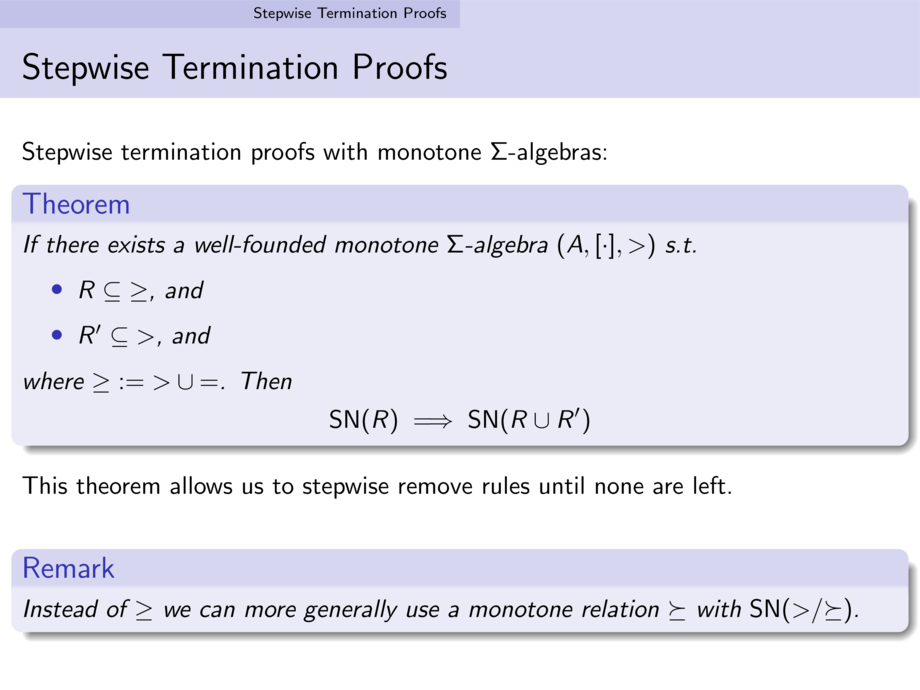
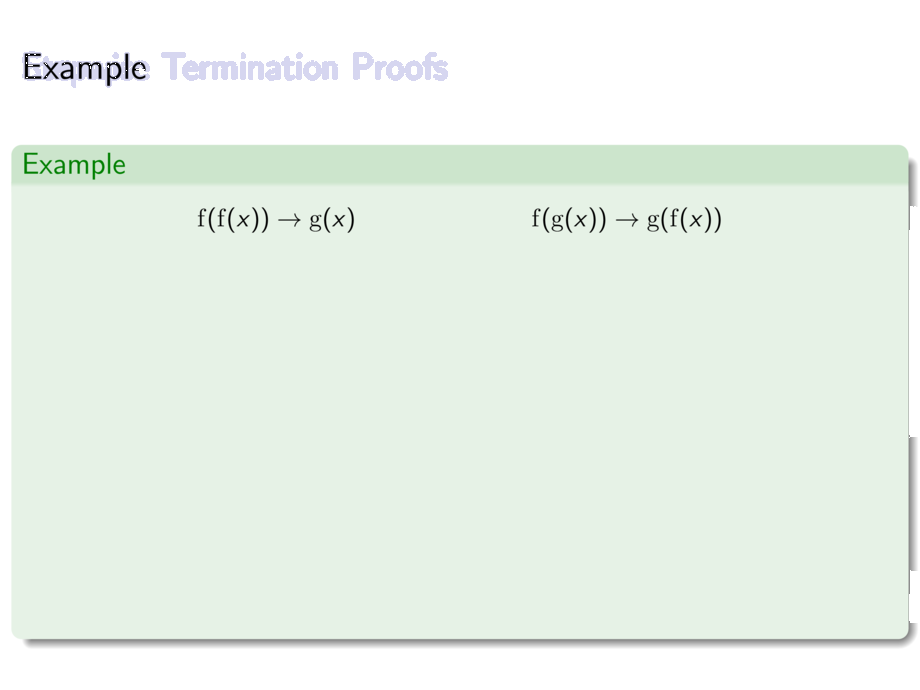
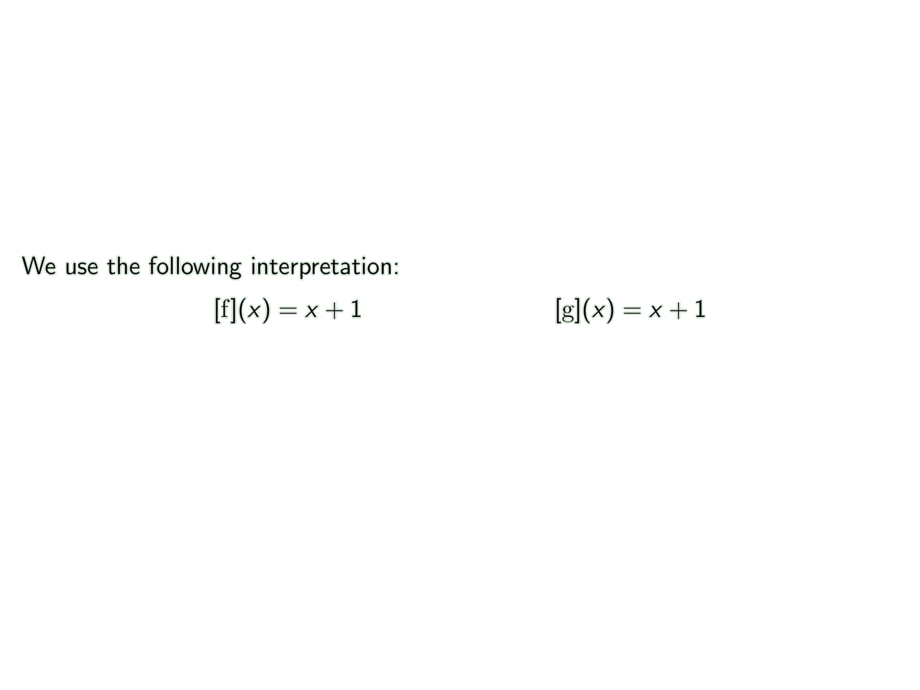
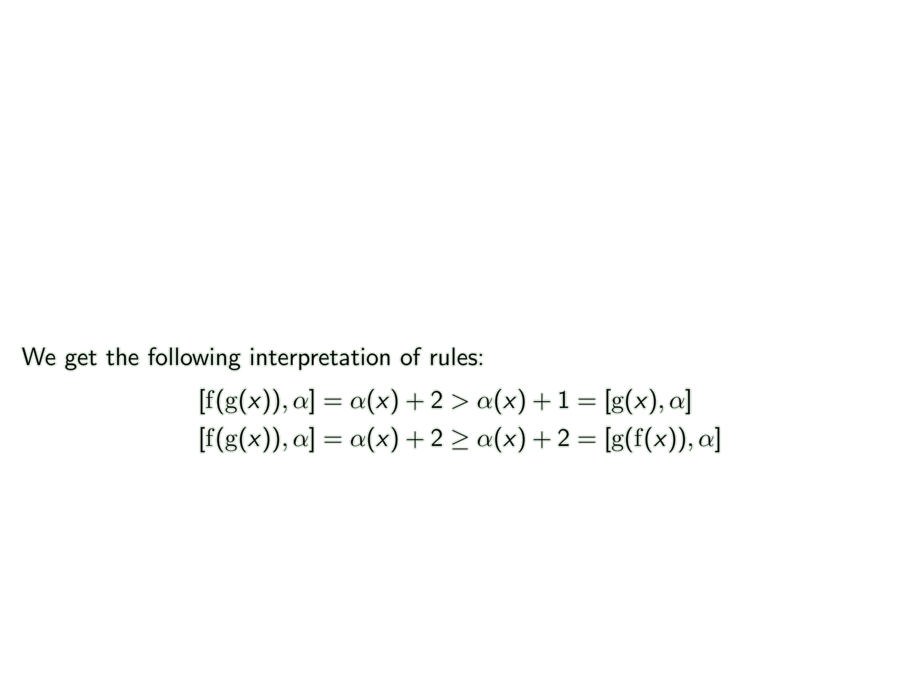
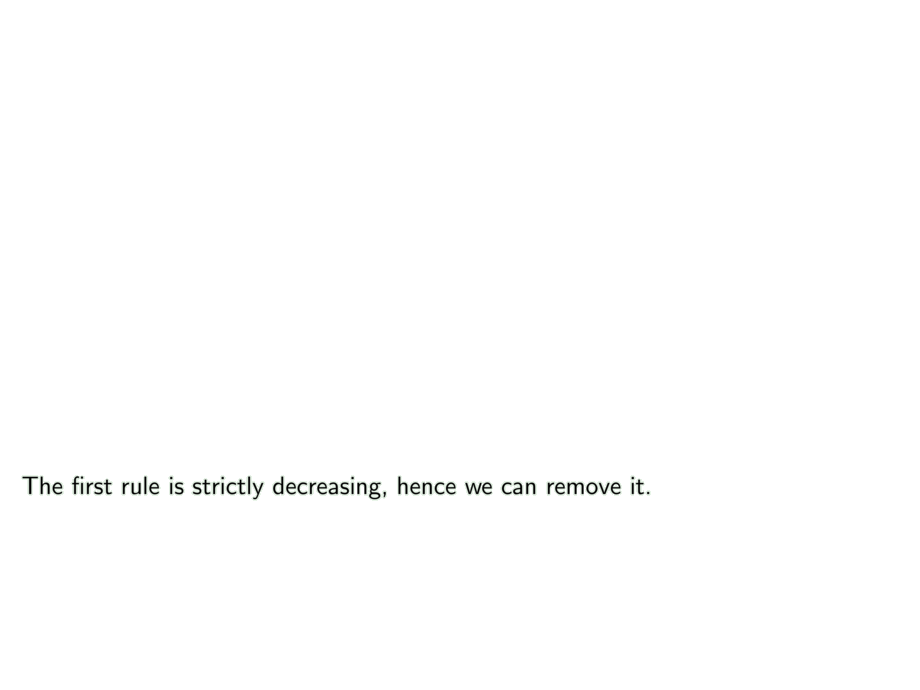































































































256/365
\begin{frame}
\frametitle{Example}
\begin{example}
\vspace{-1em}
\begin{align*}
{\rm f}({\rm f}(x)) &\to {\rm g}(x) &
{\rm f}({\rm g}(x)) &\to {\rm g}({\rm f}(x))
\end{align*}
\vspace{-1.5em}
\pause
We use the following interpretation:
\vspace{-.5em}
\begin{align*}
\interpret{{\rm f}}(x) &= x+1 & \interpret{{\rm g}}(x) &= x+1
\end{align*}
\vspace{-1.5em}
\pause
We get the following interpretation of rules:
\vspace{-.5em}
\begin{align*}
\interpret{{\rm f}({\rm g}(x)),\alpha}
= \alpha(x)+2
&> \alpha(x)+1
= \interpret{{\rm g}(x),\alpha}\\
\interpret{{\rm f}({\rm g}(x)),\alpha}
= \alpha(x)+2
&\ge \alpha(x)+2
= \interpret{{\rm g}({\rm f}(x)),\alpha}
\end{align*}
\vspace{-1.5em}
\pause
The first rule is strictly decreasing, hence we can remove it.\\[1em]
\pause
Thus for termination it sufficies to show $\SN({\rm f}({\rm g}(x)) \to {\rm g}({\rm f}(x)))$.
\medskip
\pause
We have already shown this a few slides ago.\\
Hence we have proven termination.
\end{example}
\end{frame}

